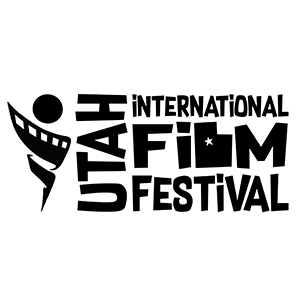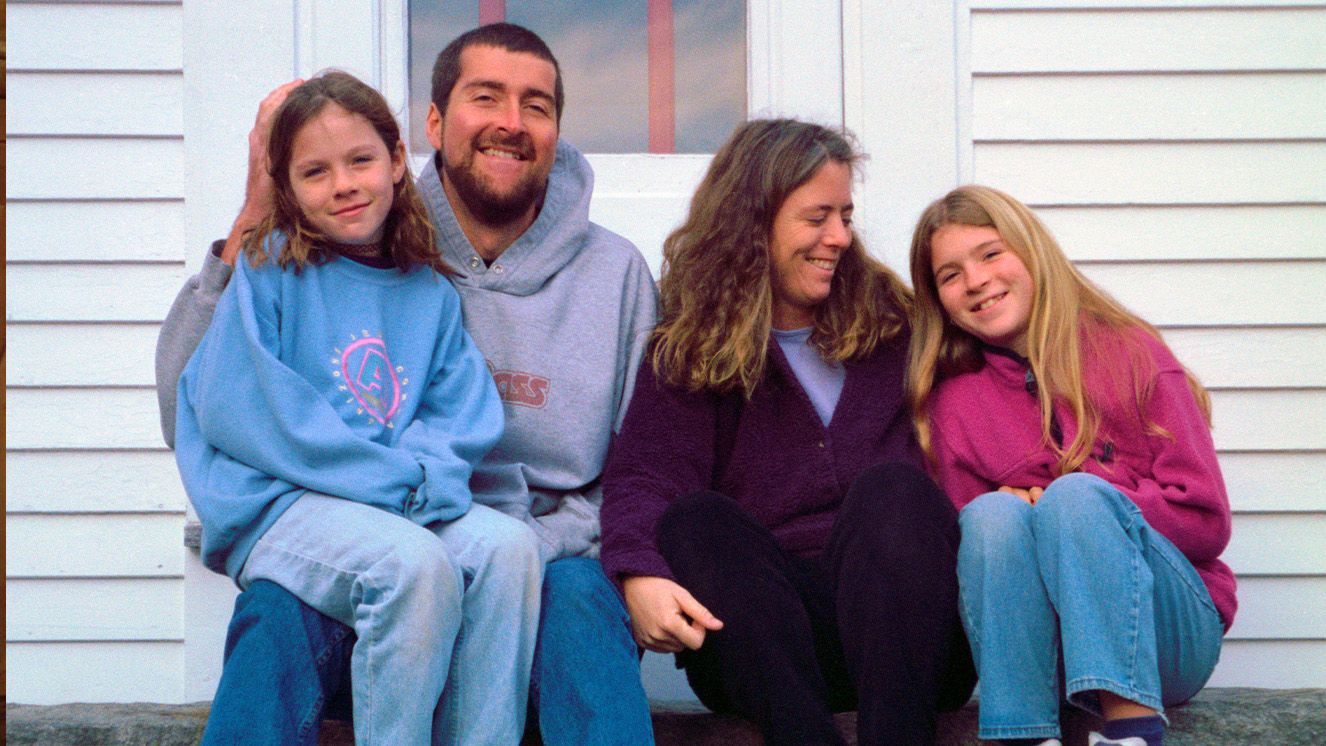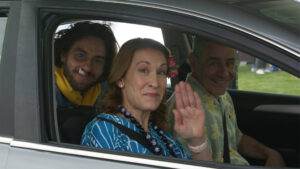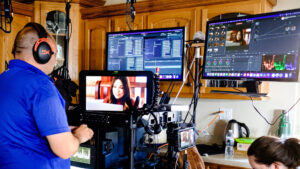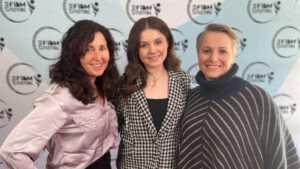‘Tape Over’ Weaves a Tapestry of Family Memories
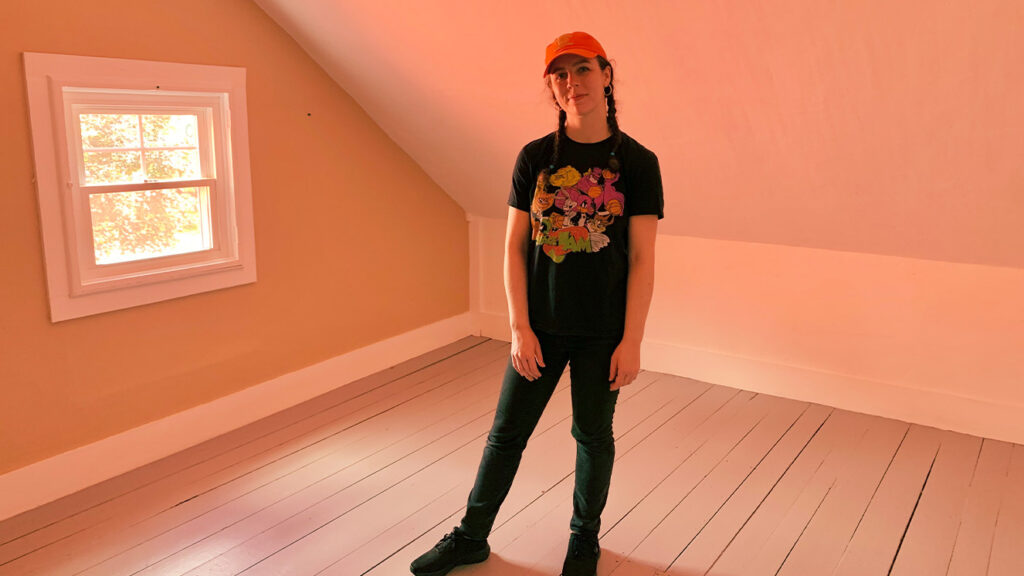
In the quiet embrace of her childhood home in New Hampshire, filmmaker Mary Rhymer embarked on a journey, capturing the essence of a bygone era in her directorial debut, “Tape Over.”
Preserving memories had always held profound importance for Rhymer. With countless hours of family videos dating back to the late ’90s and early 2000s, the old farmhouse that housed these precious moments was set to bid farewell as her parents put it on the market in 2022. Undeterred, Rhymer embarked on a unique project – a visual tribute to the house and the memories embedded within its walls.
“I wanted to document and pay tribute to the house in some way, but I wasn’t quite sure how” said Rhymer. “I filmed every inch of it…twice. Both before and after my parents vacated. When I walked through the empty house, within each room awoke dormant memories, and I could “see” snippets of my life overlapping in every direction. I realized I could use my archive of family videos along with the newer footage to recreate this feeling.”
Her lens traversed every inch of the vacant home, capturing its silence and echoes of the past. Through a blend of old family footage and new shots, “Tape Over” unfolded as a stream of consciousness, with Mary as the guide, reliving moments that had long slumbered.
“My favorite part of production was also the most difficult part, because revisiting these memories led me to a deeply personal discovery.”
An establishing shot of the house turned into an immersive walkthrough, viewed entirely through Mary’s eyes. Memories unfolded with each step – a friend exiting the house 20 years prior, her father walking through the same door a decade later. The film seamlessly wove together spliced fragments of cat videos, holidays, homespun commercials, amateur films, vlogs, and music videos, revealing a geographically accurate account of the family’s tenure.
As the narrative completed a loop, ending where it all began, Mary’s journey went beyond the physical spaces. In the editing room, a personal revelation awaited her – a deep introspection that led to the discovery of her neurodivergent identity. ADHD and Autism became the unspoken threads woven into the fabric of her narrative, transforming what started as a tribute into a personal exploration of self.
“As an adolescent, I was weird, creative, sensitive, extremely disorganized, misunderstood by my peers, and frustrated by not having the words to express myself. I mixed up my sentences, walked funny, made strange noises, dressed in quirky outfits, had difficulty starting assignments for school, and developed intense obsessions about random things. These were all things that I had already known about myself, but as I scrubbed through those old videotapes over and over again, everything suddenly clicked into place. There was something truly different about me. I was diagnosed with ADHD and Autism shortly afterwards.”
But self discovery did not end when the camera stopped rolling.
“During the editing process, I went through a period of intense reflection and grieving, which is a common rite of passage among late-diagnosed neurodivergent people. I (wrongfully) realized that all of my aspirations were just pipe dreams, given that I couldn’t stay focused on one project long enough to finish it. I gave myself grace with this film, knowing that the process was way more important than the finished product and that I would at least have the footage of the house for my archive. While that is true, upon finishing the film my perspective shifted. I began to view my differences as incredible assets. Thanks to a combination of my hyperfocus, my background in video editing, and my special interest in personal archiving, people can now experience and start to understand the chaotic mess that’s inside my brain, which is something that I have never had the words to describe.”
In the imperfections of shots and the quirks of her younger self captured on tape, Mary found authenticity. The film, breaking away from conventional norms, became a canvas for her unique perspective, a celebration of differences that she had embraced.
“I wouldn’t necessarily change it if I had the chance to do it again. There are actually a few videos that I had made when I was younger that I was hoping to use in “Tape Over”, but they had been stored on my mom’s computer for years, and they must have gotten deleted at some point. I wish I could go back in time and save those videos.”
Sometime the hardest part of telling your story is knowing where to start. Rhymer learned that there is no “Right way” to being.
“I was constantly worried about breaking the law by not getting the proper release forms signed, and I was overwhelmed by the thought of researching and submitting to festivals. I didn’t have a core group of filmmaker friends I could collaborate with, and doing everything myself felt sloppy and unprofessional. So that meant I got nothing done, and all of my ideas remained just that. Ideas. “Tape Over” may have broken all of the rules of film, but I am so proud of it. It is something that only I could have made. Breaking the rules allows you to stand out and develop a unique style, so when you make a film, make it the “wrong” way. Don’t wait til you are an expert, especially if you are neurodivergent like me, because when have we ever done things by the book?”
With “Tape Over” ready to unfold on the big screen, Mary Rhymer extended an invitation to audiences. An official selection at the Utah International Film Festival, the film would be a testament to the power of storytelling beyond the rules, a journey into the chaotic beauty inside a filmmaker’s mind. As the cinema screen lights up at Maven Cinemas in American Fork, UT, audiences would witness not just a narrative on film but a piece of Mary’s soul, intricately woven into every frame.
